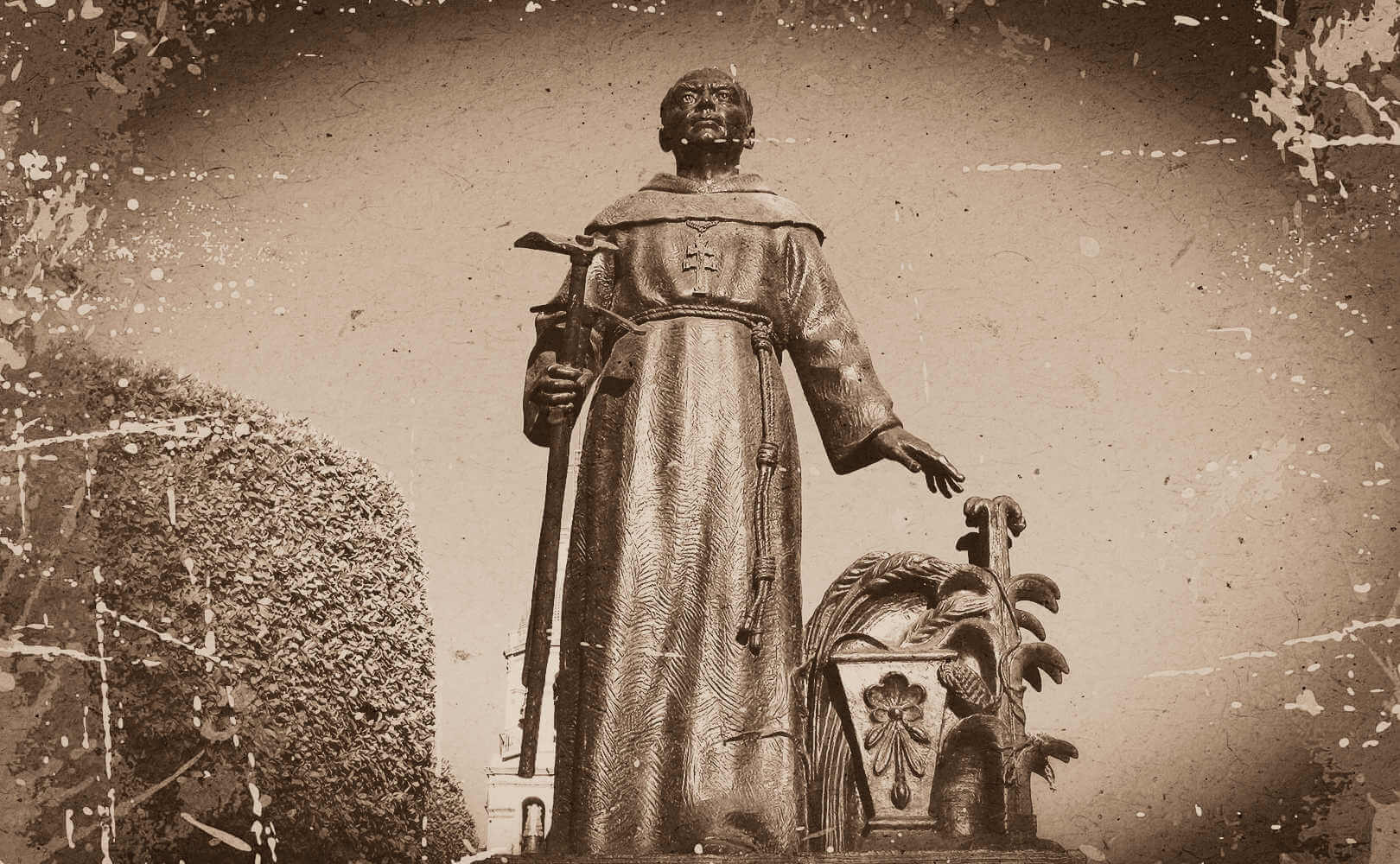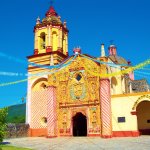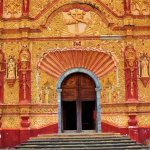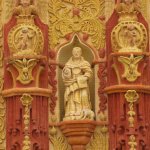It’s hard to be a Catholic today. Every time you turn on the news it seems that there’s another statue being defaced or a crucifix being vandalized or a church being set ablaze. Just the other day, a statue of Our Lady of Guadalupe was smashed to the ground in broad daylight in a Brooklyn, New York church. Regarding the desecration of statues, one name that seems to come up on a consistent basis is that of Saint Junipero Serra. The iconoclasts have gone after him with a raging vengeance.

He is popularly known as “the apostle of California” for having founded nine missions in the state of California, the first being San Diego in 1769. So revered was he in that state that a statue of him was erected in the U.S. Capitol Building. California Senator Isidore B. Dockweiler spoke at the unveiling of the statue in 1927: Referring to the humble Franciscan friar, he said, “he is worthy of first place among the immortal heroes who created our nation.”
But before he ever landed in California he spent almost 20 years as a missionary in Mexico. It was there that he honed his missionary skills.
He was born in 1713 in Majorca, Spain. In 1730 he entered the Franciscan Order, and was ordained a priest seven years later. He longed to become a missionary priest. But first, at the behest of his Order, he completed a Doctorate in Philosophy at the age of 30. Although he spent several years as a professor, that zeal for the missionary life never left him. When his first missionary assignment finally came he was jubilant! He set sail for America in 1749 with his two former students, Friars Juan Crespi and Francisco Palou, both of whom would become his lifelong companions in the New World.
There were two major waves of evangelization in Mexico. St. Junipero was part of the second wave, in the 18th century. The first wave occurred in the 16th century in the years immediately following the Spanish Conquest of Tenochtitlan (present-day Mexico City) in 1521. The first churches in the country were built by the Franciscans..
Franciscan Padre de Gante, known as the first educator of the Indians, arrived in 1523. In 1524 the arrival of the first group of Franciscans, known as “the 12 apostles,” arrived at the port of Veracruz. This marked the beginning of the evangelization of Mexico. By the end of the 16th century much of the country had become Christian, and consequently there was negligible evangelization in the following century.
Any biography of Fr. Serra makes mention time and time again, of the College of San Fernando in Mexico City, the College which he would be associated with for the rest of his life in America. This institution played a major role in the evolution of his missionary character. It was one of three Apostolic Colleges in Mexico.
What exactly were these colleges? They were a Franciscan innovation for the propagation of the faith in mission lands. Primarily, they were training centers for the formation of an elite corps of missionaries — specially selected men of exalted holiness and spiritual ideals. The first College, Santa Cruz, was founded in Querétaro (in central Mexico) in 1683 by Spanish friar Antonio Laniz. The second was that of Guadalupe in the northern state of Zacatecas, founded in 1704 by the saintly Spanish missionary, Venerable Fray Antonio Margil de Jesus (often known as the “apostle of Texas.”) San Fernando was the last to be founded, in 1734. These three colleges revived the spiritual fire of former times. From them would come forth missionaries who would have a profound effect, not only on the history of Mexico, but on the U.S. as well, particularly in the states of California, Texas and Arizona.
The colleges were built on a massive scale: 114 friars lived at the College of San Fernando in 1772; the College of Guadalupe (almost a block long) housed 105 friar priests and 126 brothers in 1796. They are all vibrant Franciscan parishes today. The day I visited the College of Guadalupe in Zacatecas, a friar was leading a group of children praying the Rosary in front of the exposed Blessed Sacrament. All were on their knees in the most solemn reverence. After the Rosary they sang some hymns to Our Lady. What a moving scene! With their sweet, angelic voices, it sounded to me like a foretaste of heaven.
Father Serra and his two companions arrived at Veracruz, Mexico, on Dec. 6, 1749, after a “horrendous” Atlantic crossing; after walking to Mexico City, a distance of 275 miles over four mountain ranges, they were warmly welcomed by their fellow friars at San Fernando. Father Serra, who had a great love for the Mother of God, would spend the night of Dec. 31, 1749, in prayer at the Basilica of Our Lady of Guadalupe in Mexico City. To her he would entrust all of his future missionary endeavors. He would spend the next several months at the College.
Within a year, he was sent to the Sierra Gorda area of central Mexico, a rugged, mountainous region 175 miles north of Mexico City. This was home to the Pame Indians, a nomadic people who had fiercely resisted the evangelization efforts of the Spanish missionaries for 200 years.
He was appointed president of the Sierra Gorda missions, and under his care, five uniquely magnificent Mexican Baroque churches would be built. These famed churches were declared a UNESCO World Heritage site in 2003. They are notable for their extraordinary, elaborately carved facades blending Christian symbolism with superb indigenous artistry.
But he was no idle observer! On one occasion his spiritual father, Fray Bernard Pumeda came to visit. He was astonished to see Junipero “transporting heavy beams with a team of workmen.” “Look at your former professor!” he said in astonishment. “Can you believe this?” “Oh yes,” said Fray Palou. “This happens every day!” According to one of his biographers, Abigail Fitch, his time in the Sierra Gorda comprised “arduous years of unremitting labor.” The kindly Serra taught the Pames skills and trades. By the end of his tenure in the Sierra, the missions were flourishing. According to his first biographer, Palou, “the Pames were eager Christians and the granaries were filled.”
A plaque in the museum at Jalpan, the site of the principal mission church, records the saint’s final words to the Pames: “I arrived with nothing. I leave you with nothing, but I leave you with a great treasure, the faith.” “His religion was alive, a glowing spark burning in the depths of his soul. It was his one great passion in life,” said Fitch. And this passion he passed on to the Pames. To this end he learned the Otomi language, an ordeal for him because languages were not his forte! He hired an eminent music teacher so that splendid liturgies were the order of the day. He organized colorful pageants and processions. The Sierra abounded with them. Every Saturday night there was a procession through the town to honor the Blessed Virgin Mary. Candles, costumes, flowers, torchlights, and the Rosary were all part of the wondrous scene. The Pames were enchanted. “He won the hearts of them all,” said Palou. In 1769 he was given his next assignment: He would head north to Alta California (present-day California) and the history of California would be changed forever.
Seven years ago I travelled to the Sierra Gorda, and went to the Saturday evening Mass in Jalpan. The church was packed. It was standing-room only. It looked like Father Serra had done his job very well indeed. He was canonized in 2015.
But Father Serra, a racist? A tyrant? The iconoclasts could not have been more wrong.





